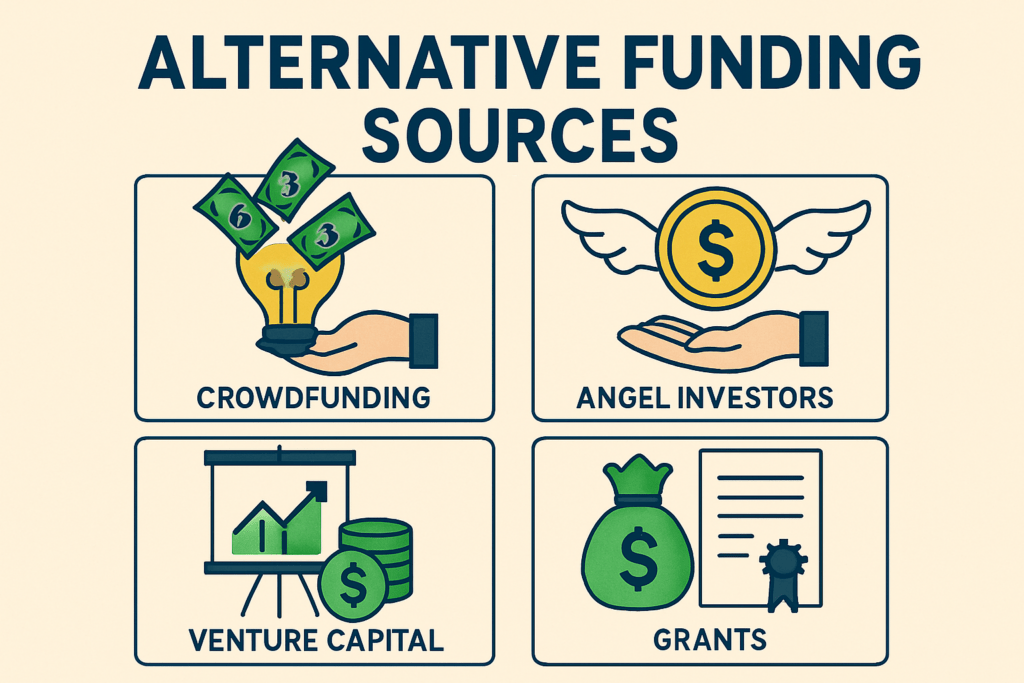The Quick Case for a Strong Investor Pitch
- Cut to the chase—your pitch is the gateway to funding.
- In 2025, quality and clarity matter more than ever.
- Introduce the main topic and keyword: investor pitch success.
- Outline this award-winning post: actionable steps, real talk, and examples.
The Quick Case for a Strong Investor Pitch
Let’s not mess around: your investor pitch is your one shot at opening doors to funding. No matter how genius your product is, if you can’t explain it—fast, clearly, and with conviction—you’re just another founder lost in the 2025 crowd. Forget jargon. Forget fluff. Investors crave quick clarity and big potential, not showy PowerPoint tricks.
In this post, we’ll cut through the noise around investor pitch success. Expect no-nonsense advice you can use today: crisp steps, blunt tips, and some hard-earned wisdom from real-world pitches that got the job done. You’ll get the “how” of a killer pitch, not just the “what.” Let’s roll.
What Makes an Investor Pitch Successful?
Investors want answers, not riddles. Cut through the hype and show them you understand the game: prove you’ve got traction, define a real problem, deliver a killer solution, and—most of all—make it clear how they’ll get a return. If you can nail those four, you’re already punching above most pitches in the pile.
Brevity is gold. Nobody ever wished a pitch was longer. Sharpen every sentence, skip the backstory. But don’t be dry—smart storytelling makes your problem and solution stick. A strong narrative, framed with confidence (think competent, not cocky), will carry you further than fancy slides or jargon.
Hammer home what investors care about: how big is the pain point, and how real is your progress? Data beats dreams. Support every claim with a number, every insight with proof. That’s classic investment pitch tip material.
And don’t overlook the delivery. Good presentation skills mean you’re clear, concise, and in control. No rambling, no reading verbatim. Speak to the investor, not at them. If you’re authentic and prepared, you’ll stand out in 2025’s funding crowd—no fluff required.
Step-by-Step Formula for Investor Pitch Success
Ready to make your pitch count? Cut the fluff. Here’s how to build one that actually lands, mapped out in no-nonsense steps:
- Start with the Hook:
Don’t wait—hit investors with a jolt in your opening 30 seconds. Maybe it’s a jarring stat, a quick story, or a question that pulls them in. If you don’t have their attention now, you’re toast. - The Problem:
Spare the buzzwords. Lay out the pain point—make it close to home. Investors want to know there’s real suffering in the world (or at least a nagging inconvenience) that needs solving. - Your Solution:
Get right to it. What are you building and why should anyone care? Show what makes your approach fresh, better, or defensible. Don’t drone on—show just enough to spark curiosity, not overwhelm. - Why Now?:
Market timing isn’t just trendy jargon. Tell them why this problem—your solution—needs to happen today. COVID changed something? Tech caught up? Shifts in regulation? Say it in one or two lines. - Traction So Far:
This is where you get to flex. Forget future projections for a second—investors want receipts. Users, revenue, partnerships, wait-lists, or even a killer prototype. Point to anything that shows momentum is real. - Team Credibility:
Why you? And who’s riding shotgun? Don’t just list resumes—connect the dots. “Our CTO scaled X at Google” lands harder than “10 years tech experience.” Investors bet on people first. - Business Model & Growth Potential:
How do you get paid? How do you scale? Even if the path isn’t totally clear, sketch out how money comes in and how you reach real size. If this is vague, investors tune out. - Crystal Clear Ask:
Don’t fumble at the finish line. State what you want: how much, what for, and any sweeteners. “We’re raising $1M to scale sales and finish product dev.” No more, no less.
Bottom line:
Keep it simple. Use crisp visuals. If you need an appendix, skip it. The goal? They remember you—and what you want—when you leave the room. That’s the only way you get a callback.
What Happens After Winning Millions?
Experiencing the thrill of winning a life-changing lottery jackpot is a dream for many. However, the sudden influx of wealth can bring not just excitement, but also a host of challenges. Managing substantial new wealth requires careful consideration and planning. Let’s explore the different facets of life after winning millions.
The Financial Reality of Winning
Entering this new financial realm includes a series of critical obligations and options:
- Taxes and Legal Issues
- A significant portion of the winnings typically goes to taxes.
- Proper legal guidance is essential to navigate complex financial waters.
- Investing vs. Spending
- Some winners hire financial advisors to ensure their wealth lasts.
- Others may indulge in reckless spending, jeopardizing their financial future.
- Budgeting for the Future
- Without careful management, substantial fortunes can quickly evaporate.
A Lifestyle Overhaul
Winning a jackpot often results in immediate lifestyle upgrades and changes:
- Luxury Purchases
- Winners often acquire mansions, luxury vehicles, and plan extravagant travels.
- Social Pressure
- Long-lost acquaintances and distant relatives might resurface, seeking benefits.
- Privacy Challenges
- There may be struggles with media attention and maintaining personal privacy.
While some winners eagerly embrace an upscale lifestyle, others opt for a discreet existence, avoiding undue attention.
Giving Back and Creating a Legacy
Beyond personal gain, many winners choose to leverage their fortune for greater impact:
- Charitable Contributions
- Significant donations are made to various charitable organizations.
- Community Projects
- Funding local projects and initiatives help to revitalize communities.
- Business Investments
- Some winners invest in enterprises that generate employment and promote growth.
Transitioning from players to philanthropists, these winners demonstrate that wealth can forge a meaningful legacy. However, not all outcomes are positive; numerous winners who fail to wisely manage their funds face financial ruin within a few years.
Ultimately, the management of newfound riches significantly influences not just the winners’ own futures, but also the broader impact they may leave behind.
Presentation Skills: How to Deliver Under Pressure
Pitch day is nobody’s comfort zone. Sweaty palms, fast heartbeat, eyes staring back—welcome to the investor firing line. The fix? Preparation meets simplicity. Rehearse your pitch out loud, more than you want to. Run it with a timer. Record yourself, then listen without mercy. Structure is your lifeline—know your sequence cold so you can focus on how, not just what, you’re saying.
Don’t underestimate how you show up. Walk in standing tall. Make eye contact early—pick two or three people in your audience and connect with them as you speak. No jargon, no mumbling: use plain English, and don’t be afraid of silence. Pauses slow the room down and give your key points room to land.
Watch your hands and body; they talk when you’re not. Use gestures to underline a point, not distract from it. Breathe low and steady to keep your pace relaxed—this keeps you from rushing through your big ideas. If you fumble, just keep moving. Confidence isn’t never making a mistake; it’s owning whatever happens.
Bottom line: they’re sizing you up just as much as your numbers. Deliver like you mean it, and you’ll leave a mark.
After the Pitch: Following Up Fast
Don’t drop the ball after you leave the room—that’s rookie territory. The clock starts ticking the second your pitch ends. First, fire off a crisp thank-you note. No fluff; just genuine appreciation for their time, plus the key takeaways or next steps you discussed. Include any promised materials: your deck, data, or a one-pager. Make sure these are tight, typo-free, and easy to digest.
Respond to questions promptly. When investors reach out, answer directly and fully—no dodging or slow rolls. If you don’t have an answer, say so, but explain how you’ll get it. Keep your updates short and relevant. Remember: Investors are busy and draw conclusions fast. Stay on their radar, but don’t spam. Keep your messaging focused on progress and clarity.
If you haven’t heard back in a week or two, a single, low-friction follow-up is fair game. Express continued interest, reference the original meeting, and offer a simple way for them to re-engage. After all, in the end, how you handle the follow-through tells investors as much about you as how you handled the stage.
Extra Tools and Resources
Don’t pitch blind. Take advantage of what’s out there. Check out real-world examples and breakdowns at HubSpot’s Investor Pitch Resource. Look for templates—no shame in starting with a proven structure. Slide design? Keep it spartan: Canva or Google Slides, minimal clutter, sharp fonts, essential visuals only. Want to drill your delivery? Try Loom or Zoom to record practice runs.
Also: Books like “Pitch Anything” (Oren Klaff) and “The Art of the Start 2.0” (Guy Kawasaki) give it to you straight—solid, field-tested advice. And if you want community feedback, work your pitch at local startup meetups or jump into Y Combinator’s online forums.
Bottom line—use tools, but don’t get lost in them. The best pitch is still the one you deliver, and you’re always the X-factor.
Wrap-Up: Your Pitch, Their Decision
Here’s the bottom line: investor pitch success comes from being succinct, credible, and knowing your stuff cold. Show what matters—traction, solution, team, the clear ask—then get out of your own way. There’s no magic; just polish, backbone, and a pitch customized to your audience.
The best pitch is honest, sharp, and tailored. Ditch the jargon. Stick with the facts. Don’t try to dazzle—just connect. Investors remember pitches that respect their time and make the decision easy.
You’ll get better with each run. Don’t get stuck planning forever. Draft it. Practice it. Deliver it. Their decision comes next.




